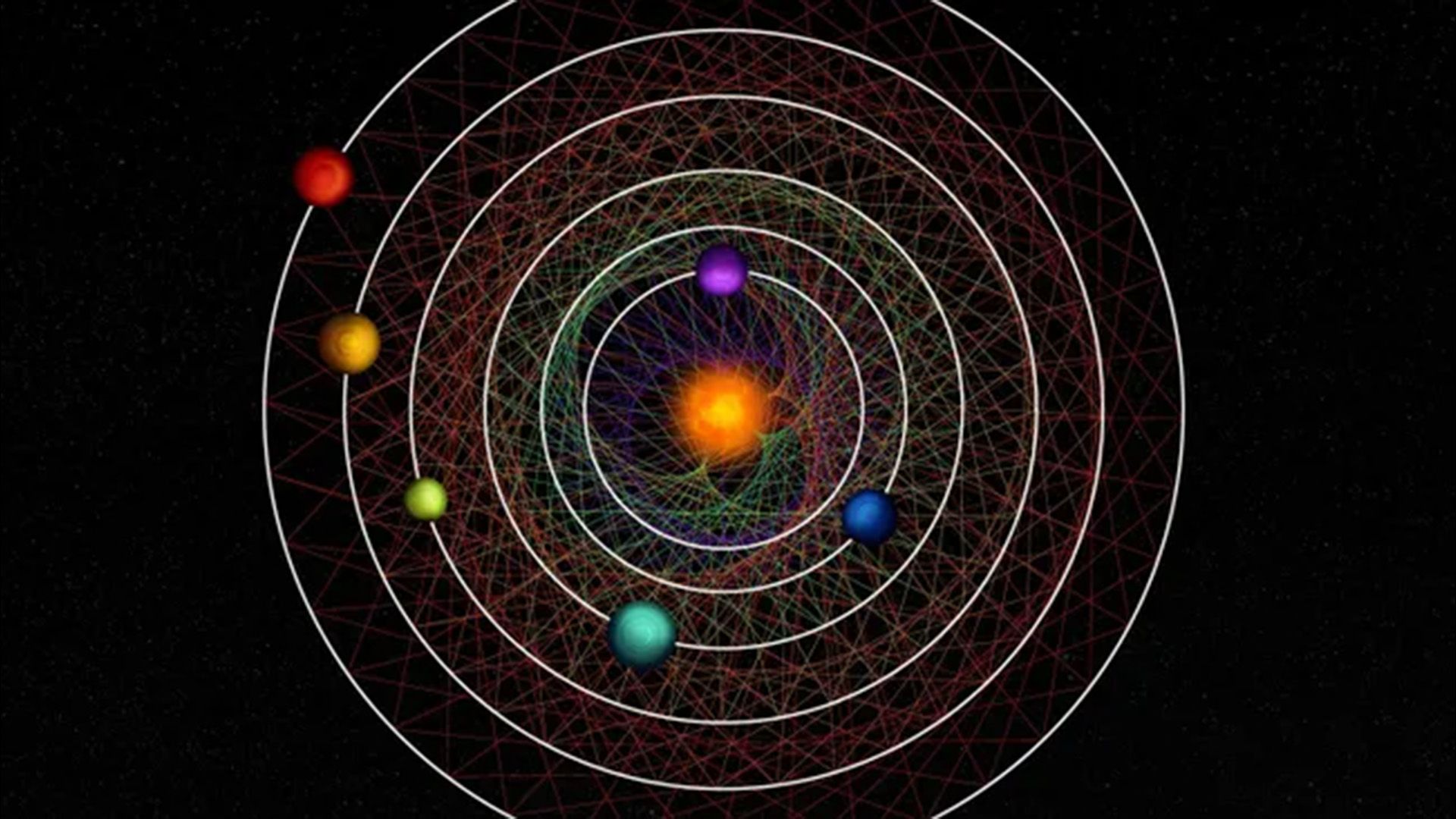Could this mathematically perfect planetary system host intelligent life?
Follow us on Google News (click on ☆)

The six planets orbit around their central star HD 110067 in a harmonic rhythm, with planetary alignments occurring every few orbits.
Credit: CC BY-NC-SA 4.0, Thibaut Roger/NCCR PlanetS
Scientists have used the world's largest fully steerable telescope, the Green Bank Telescope in West Virginia, to search for signs of extraterrestrial technology in the HD 110067 system. This search was motivated by the possibility that, just like the radio waves emitted by our satellites and telescopes can be detected outside our solar system, similar signs of advanced technology could be picked up from HD 110067.
Detecting technological signals, or technosignatures, is complex due to the difficulty in distinguishing them from natural sources of radio waves and human technological signals. Nevertheless, researchers employ specific techniques to ensure that signals detected do not come from local interferences. For example, a presumed extraterrestrial transmitter could concentrate a lot of energy in a narrow range of frequencies, a behavior unlike that of natural astrophysical phenomena.
Despite the absence of technological signals detection in the HD 110067 system so far, this research does not eliminate the possibility of their existence but rather indicates that no signal has been directed towards us at the time of observations. The research team continues its efforts, refining data on the sizes and masses of the discovered planets to better understand the chemical composition of the system and, possibly, its formation mechanisms.
Three reasons that make this system particularly interesting in the search for technosignatures
The specific nature of the stellar system HD 110067 makes it a prime candidate for the search for technosignatures. Three main reasons motivate this scientific interest.
Firstly, the configuration of its six "sub-Neptune" planets, which revolve around their star in mathematically harmonious trajectories, exhibits a stability and regularity never before observed. This orbital harmony could facilitate conditions conducive to the emergence and maintenance of advanced technologies, should life be present.
Secondly, the relative proximity of this system to Earth, at only 100 light-years, allows for more detailed observation and analysis thanks to current technologies. Weak signals or subtle hints of technosignatures are thus more accessible to terrestrial or space detection instruments, increasing the chances of detecting possible extraterrestrial technologies.
Finally, the edge-on orientation of the HD 110067 system, as seen from Earth, offers a unique perspective for studying planetary transits. This orientation allows researchers to directly observe the planets passing in front of their star, which can reveal anomalies or specific signals indicating the presence of artificial structures or technological modifications in the system. This observation window is particularly precious for detecting weak signals that would otherwise be masked or indiscernible.
Combined, these features make HD 110067 an exceptional natural laboratory for testing hypotheses about the presence of technosignatures and, by extension, advanced civilizations in the Universe.